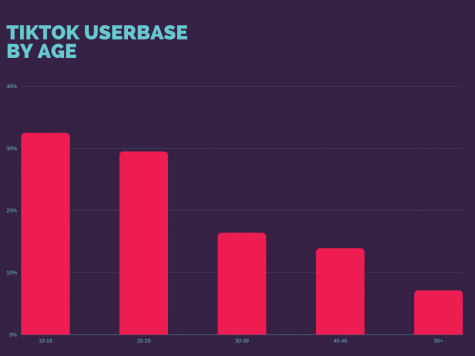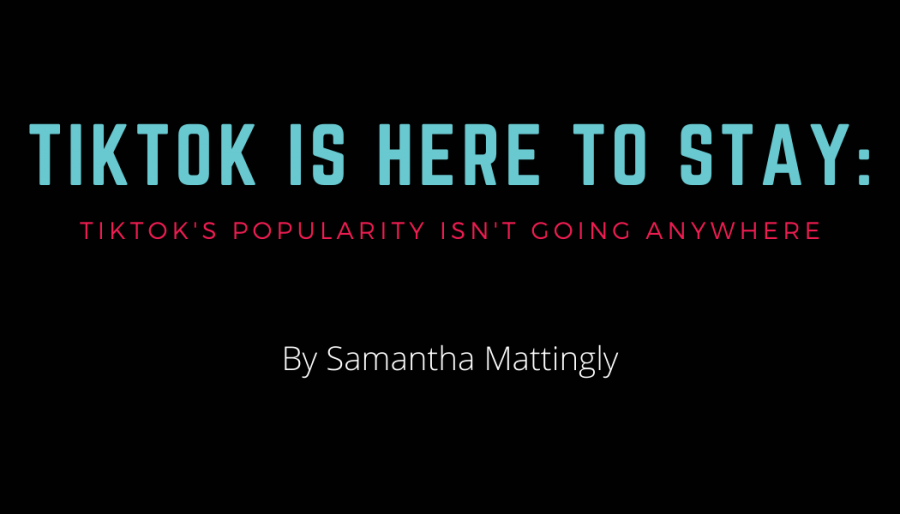Ever since March of 2020, people worldwide have been looking for a distraction from the ongoing pandemic. Many of these people have found that distraction in a new, addictive app. The app in question is TikTok, a social media app relying on videos. The users can make a video up to sixty seconds long, and can do practically anything, as long as it follows the community guidelines. Due to the versatility and unique interface of the app, it’s not hard to see why TikTok won’t be going anywhere anytime soon.
TikTok was one of the most popular social media sites of 2020, ranking fifth place on Adobe Spark’s Top 7 Social Medias, just below Twitter. Despite TikTok’s young age (it was only introduced in 2016) it has amassed over 1 billion downloads and holds a steady 800 million monthly users.

The user base of Tik Tok is nearly exclusively those under 35, which leads a lot of people to believe that it’s primarily a kid’s app, which isn’t true. As of July 2020, 29.5% of the user base was between 20 and 29, the second most popular age group on the app. The most popular age group being ages 10-19, at 32.5%.
Outside of the most popular TikTok age groups, other social media sites have attempted to recreate what TikTok has. Instagram released Reels, and Snapchat created a Spotlight feature. The fact that social media giants such as Instagram and Snapchat have modeled features of their apps off of TikTok is a huge indicator of its success. It
means that other companies have seen the impact of TikTok and have predicted that it’s going to stay popular enough to make it worth adding to their own app and website designs.
Other than just the numbers, TikTok’s impact on pop culture is undeniable. Practically every song on the radio the past few months started on TikTok first. Things like fashion trends, dances, and even decoration trends get spread on TikTok like wildfire.
Another large reason for the success of the app is it’s incredibly accurate algorithm. Within a few hours of using the app, you’re only seeing what you want to. These different genres of For You pages have been dubbed sides of TikTok—for instance, there’s an alternative side of TikTok, a redneck side, conservative side, liberal side—really, no matter your interests, there’s something for everyone.
The app also has a creator fund which serves as a huge attraction. If a creator gets 10,000 followers, they can join the creator fund and get money for producing content. According to Business Insider, the creator fund gives about 4 cents per 1,000 views. While this may not seem like much, a popular TikToker’s video can get millions of views in a day.
It also serves as a great platform to spread awareness. There are countless TikToks about personal tragedies that have resulted in huge fees that can get paid off by making one TikTok, or a small business that could blow up overnight from a packaging video, or even a social issue petition that could get a million signatures within 12 hours.
Outside of getting popular out of monetary need, the excitement of never knowing if you’ll blow up on TikTok is undeniable. Creators like Charli D’Amelio got their fame off of TikTok, for doing exactly what most of the other users of the app do—dance and lip sync. A creator who gets hardly any views can get a million overnight, seemingly at random.
Between so easily finding a niche on TikTok, the possibility of fame and fortune, and the impact the app has had on pop culture in general, it’s safe to say it’ll be around for quite a while. Maybe the app will become obsolete to the coming generations, but it’ll always be a significant part of the current generation’s social presence.



